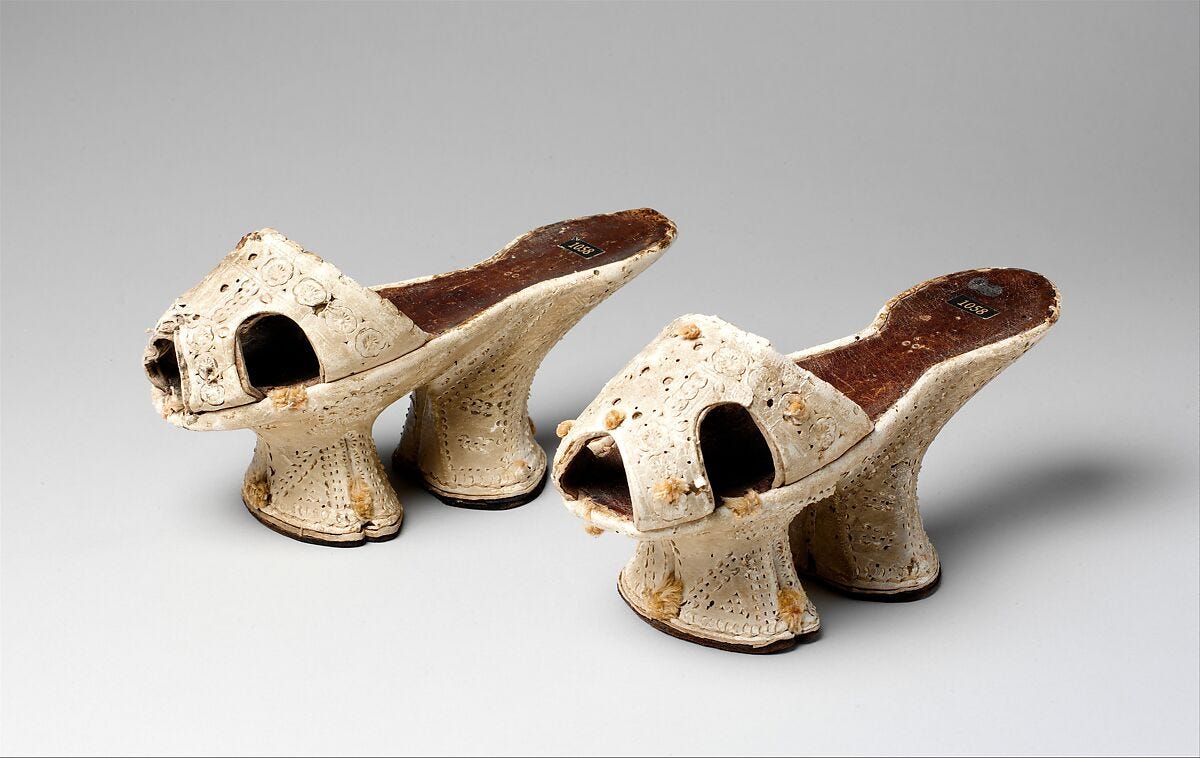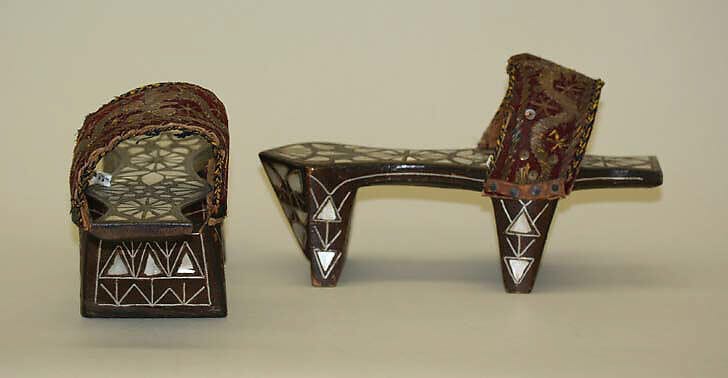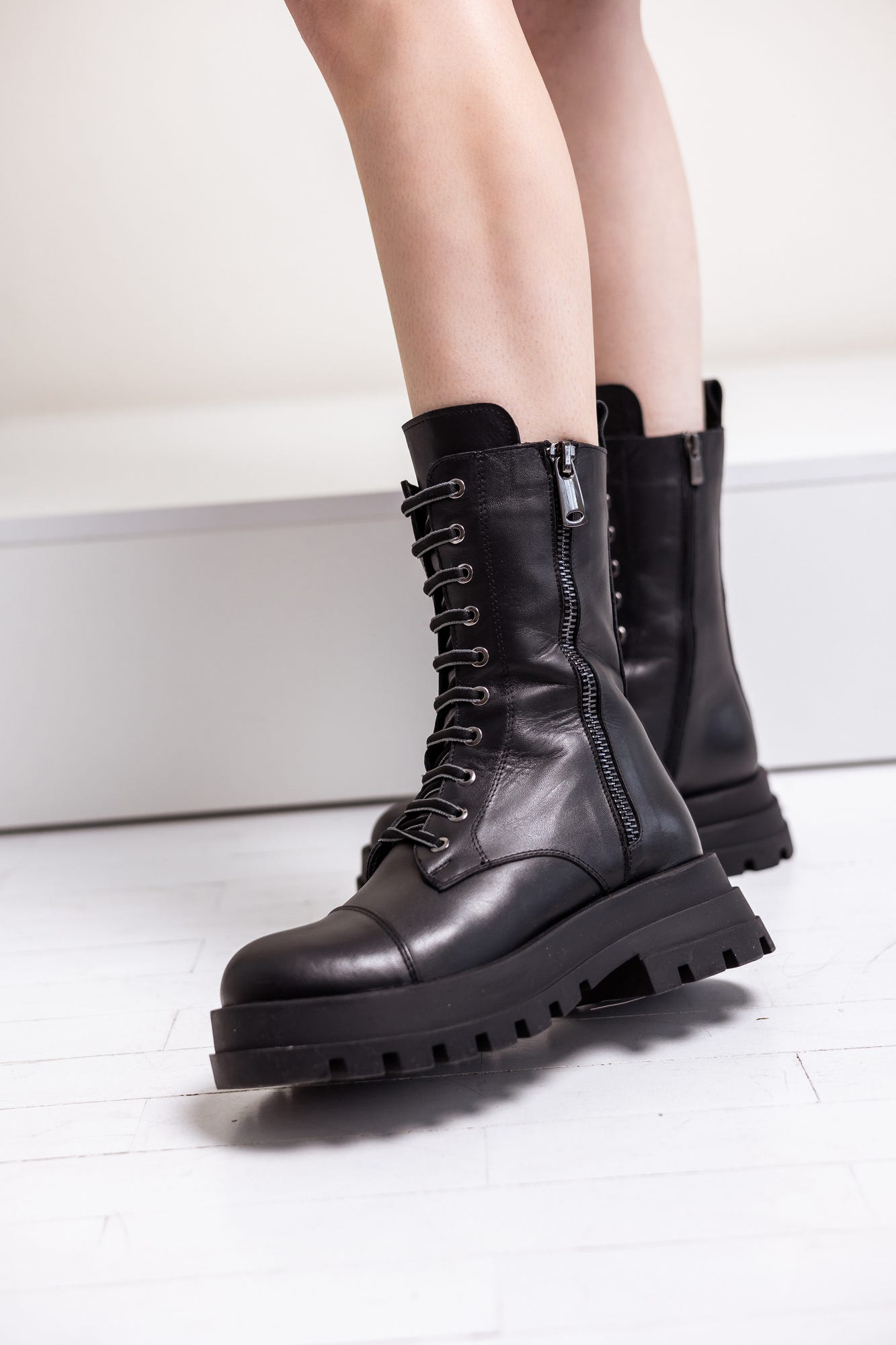Sky-High Fashion: Platform Shoes
The popularity and foot-pounding consequences of this enduring shoe
They’ve been known to cause ankle injuries and are not exactly the best footwear when it comes to your posture. Some folks consider them even less stable than spiked heels, and anyone who has worn a pair three inches or more in length knows how unsteady you can feel in a pinpoint heel. Kind of like you’re walking on your toes because you are walking on your toes since the heel pushes your foot up so high.
But unlike with heels, platform shoes tend to also be very rigid–maybe with the exception of sneaker platforms–thus the unfortunate result can be murder on the front tips of your feet. As well as the ankles. And forget about correct posture. Stilettos cause some of the same issues but platform shoes can be worse.
So why do we wear them? Why have we persisted in allowing them to adorn our feet and take up precious closet space since, well, ancient times? Read on.
A pair of my own platform shoes from back in the day. Gorgeous, but the minor wear and tear on display indicate how infrequently I wore these babies. Cute, yes. Practical, no.
Think you’ve seen people wearing some far out, ridiculously tall platform shoes in recent times? Think again. Today’s platform wearers, men and women, have got nothing on those who wore platform shoes in bygone eras, especially during ancient times. The platform shoes we wear now seem tame (and actually sane) in comparison. I mean, you can walk in them without assistance. That was not always the case.
Let’s pause for a minute to all get on the same page as to exactly what platform shoes are. Wikipedia defines them as “shoes, boots, or sandals with a thick sole, usually in the range of 3–10 cm (1–4 in).” I think most would agree that they are shoes with an outrageously high sole and heel and that they have been and still are worn by both women and men.
On a more informal note: They’re tall. They’re clunky. They’re not comfy. They make a woman’s leg look skinny. (Is this a good or bad thing? You decide.) Some people even consider them ugly. Or dangerous.
Buskins: From the archives of Pearson Scott Foresman, Wikimedia Foundation.
Yet they’ve been around since forever. I’m talking BC here.
There have been periods when they were more popular than others and times when they dropped out of favor completely, but are believed to have been adorning our feet since the ancient civilizations of Greece, Rome and Egypt. Although in modern times, platform shoes are generally worn without any real reason other than beauty or style, in ancient periods they were worn for various purposes.
As far back as 200 B.C. important characters in the theater wore thick soled leather boots or sandals to extend their height and visibility on the stage. Remember, the average citizen was shorter back then than now. The more important the character, the higher the platform.
Soldiers and hunters wore platform shoes for a different reason, mainly protection from brush and thorns on the ground. Wealthier men and women who could afford them wore them to protect their feet from the wet and dirty streets. They seem to have also been popular in baths to keep feet dry. Thus they were also a sign of social status.
Chopines were a popular platform shoe worn by women in Venice, Spain and other parts of Europe in the 15th to 17th centuries. As during ancient times, the purpose was to protect the wearer’s feet and clothing from the dirty muck and grime in the streets. They were also worn by prostitutes and fashionable ladies alike as a way to stand out. Some of these platforms reached the unbelievable height of 18 inches and looked more like stilts than shoes. Check out the article in A Women’s Thing here.
Chopines: Irene Lewisohn Bequest, 1973, The Metropolitan Museum of Art.
How did one walk in them? Very slowly probably. Wearers often needed the assistance of servants to move about. Those worn by society women were often covered in luxury fabric such as velvet and leather and adorned with jewels, even diamonds!
Another interesting source for more on the odd yet fascinating Chopine, with lots of images, is this article in Collector's Weekly.
Ottoman wooden stilt shoes featuring distinctive mother-of-pearl inlay, Gift of Mrs. J. Wright Rumbough, 1972, The Metropolitan Museum of Art.
In Europe during the middle ages, men and women of various social statuses wore wooden protective covers called pattens over the tops of shoes, again to keep one’s feet out of dirty or muddy streets. Remember that roads were seldom if ever paved during many of these early periods.
While they were worn for practical purposes in the past, today they are mostly worn for their aesthetic appeal and can be found in high-fashion and streetwear alike. In the more modern era they probably reached the peak of their popularity in the 1970s.
Since then Prada, Gucci, Balenciaga, and Nike have chimed in and designed all manner of platform shoes, from slides to sandals and sneakers. Ankle boots, Mary Janes (chunky pumps with ankle straps) and especially sneaker platform shoes continue to remain popular among youth.
Today’s popular platform boot.
So there you have it. Platform shoes obviously are not practical footwear when it comes to health and posture. The website WebMD considers them among the worst shoes for your feet because of their rigidity. Yet they have served important purposes throughout history.
And when it comes to fashion and beauty, you know what they say: No pain, no gain.
If you enjoyed this post, consider subscribing to “Writing Creatively” to get my updates when they first come out.
If you enjoyed this post, consider subscribing to “Spicy Adornment” to get my updates when they first come out.








